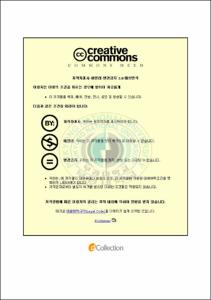해파리로부터 콜라겐의 추출최적화 및 물리화학적 특성 해석
- Alternative Title
- Processing Optimization and Physicochemical Characteristics of Collagen from Jellyfish (Rhopilema hispidium)
- Abstract
- Collagen is the most abundant bioactive ingredients in the biofunctional protein market. Now these days, collagen is mainly derived from bovine and porcine by-products, but the usage of these mammalian sources is limited or prevented because of bovine spongiform encephalopathy (BSE). Therefore, the development of new sources freed from these diseases is needed to replace the mammalian sources. Jellyfish (Rhopilema hispidium) is a new source of collagen which has potential. Additionally jellyfish often appears in summer and is harmful to other fish production. Harvesting jellyfish for their functional ingredients has two advantages, which is earning economical benefit and solving an environmental problem. Therefore, the objectives of this research are to investigate the properties of bioactive proteins from jellyfish and to develop the technology for using these proteins in high value added products.
First of all, to optimize collagen processing from jellyfish (Rhopielma hispidium), response surface methodology was used. Extraction optimization of collagen was performed by using a central composite design of response surface methodology. NaOH concentration (X₁, %), NaOH treatment time (X₂, h), pepsin concentration (X₃, %) and digestion time (X₄, h) were independent variables. Dependent variable was collagen dry yield (Y, %). The optimal conditions were X₁ = 1.03% (NaOH concentration), X₂ = 7.24 h (NaOH treatment time), X₃ = 0.52% (w/v) (pepsin concentration) and X₄ = 53.4% (digestion time). The predicted collagen yield under optimal conditions was 79.17% and its experimental value of collagen yield was 78.2%.
In oder to investigate physicochemical characteristics of the jellyfish collagen, amino acid composition, SDS-PAGE, fourier transform infrared (FT-IR) spectroscopy, solubility, denaturation temperature (Td) and viscosity were investigated. According to amino acid analysis, the jellyfish collagen had 12.03% imino acid. And the calf skin collagen had 19.93% imino acid. In the electrophoretic patterns, it is indicated two different α(α1 and α2) chains in the jellyfish collagen. The calf skin collagen is comprised of α1, α2 chains, β-component and γ-component.
FT-IR showed regions of amides A, I, II and III for 3435 and 3436 cm^(-1) (amide A); 1652 and 1652 cm^(-1) (amide I); 1554 and 1555 cm^(-1) (amide II); and 1240 and 1237 cm^(-1) (amide III), respectively, exhibiting similar wave numbers to calf skin collagen.
Solubility of the jellyfish collagen on NaCl concentration as not changed from 0-2%, and then were decreased from 3-6%. Solubility of the jellyfish collagen on pH variation as high in the range of pH 2-4 and then sharply decreased up to pH 7. Denaturation temperature of collagen from jellyfish was 30.5℃. Relative viscosity was continuously decreased on heating up 30℃. The decreasing rate was reduced in the temperature range of 30-50℃.
The results showed that it can be economically obtained to high quality, disease-free and safe collagen from jellyfish which are currently an unused potential resource. Thus, an amount of imported mammalian collagen can be replaced by domestic production of collagen from jellyfish. Therefore, collagen from jellyfish can be processed to high valued products such as healthy food supplement and medicine which will appeal to the modern customers who have interests in health and beauty.
- Issued Date
- 2008
- Awarded Date
- 2008. 8
- Type
- Dissertation
- Publisher
- 부경대학교 교육대학원
- Alternative Author(s)
- Ahn, Ju-ryun
- Affiliation
- 부경대학교 교육대학원
- Department
- 교육대학원 수산교육전공
- Advisor
- 김선봉
- Table Of Contents
- Abstract = Ⅰ
서론 = 1
재료 및 방법 = 4
1. 실험재료 = 4
1.1 재료 = 4
2. 실험방법 = 4
2.1 콜라겐의 추출 = 4
2.2 실험설계 및 자료분석 = 5
2.3 아미노산 분석 = 9
2.4 SDS-PAGE = 9
2.5 Fourier transform infrared (FT-IR) spectroscopy = 9
2.6 용해도 측정 = 10
2.7 변성온도 측정 = 11
2.8 점도 측정 = 11
결과 및 고찰 = 12
3.1 콜라겐 추출의 최적화 및 통계적 해석 = 13
3.2 아미노산 조성 = 19
3.3 전기영동 특성 = 21
3.4 Fourier transform infrared spectroscopy 특성 해석 = 23
3.5 용해도 해석 = 26
3.6 변성온도 해석 = 30
3.7 점도 해석 = 32
요약 = 34
참고문헌 = 37
감사의 글 = 44
- Degree
- Master
- Files in This Item:
-
-
Download
 해파리로부터 콜라겐의 추출최적화 및 물리화학적 특성 해석.pdf
기타 데이터 / 700.46 kB / Adobe PDF
해파리로부터 콜라겐의 추출최적화 및 물리화학적 특성 해석.pdf
기타 데이터 / 700.46 kB / Adobe PDF
-
Items in Repository are protected by copyright, with all rights reserved, unless otherwise indicated.